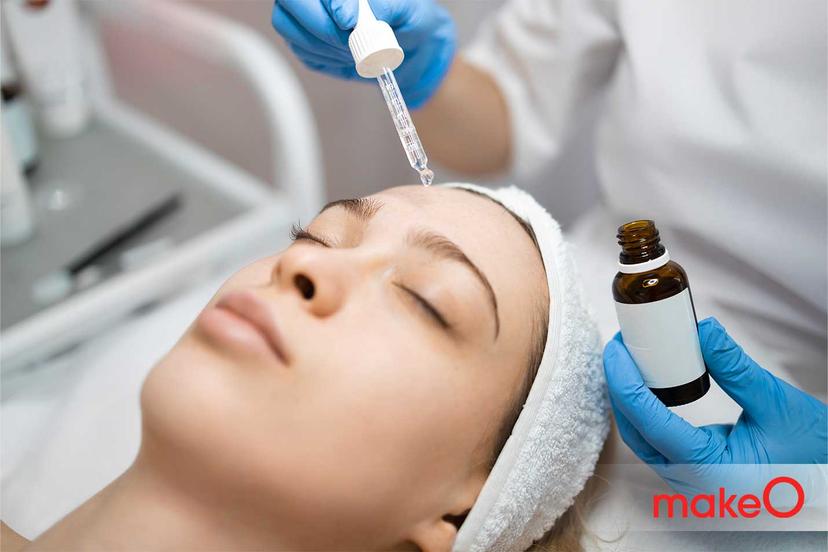MakeO blog
As women, our tresses are a huge part of our persona and Indian beauty standards have always associated long, healthy hair with grace and beauty. It’s only natural for us to place importance on our hair and the way it looks, but sometimes, for reasons outside our control, we can face issues such as hair loss. In this article, we’ll jump into hair loss in women, also known as Female Pattern Baldness. We’ll discuss why it occurs, its stages and treatment options in detail. So let’s get started!
What is Female Pattern Baldness?
Female Pattern Baldness, also known as Female Pattern Alopecia or Androgenic alopecia, is a common type of hair loss in women. With this condition, one can lose hair on the scalp from the centre or the sides of the hairline, leaving behind bald spots. This condition causes hair follicles on your head to shrink, leading to thinner hair that grows shorter over time. Once this begins, slowly the hair stops growing entirely.
Female Pattern Baldness Causes
There are several causes of woman pattern baldness. Here are the main female baldness causes:
1. Genetics
Your genetics can play a pivotal role in your baldness. If it runs in your family, you will naturally be more likely to experience it yourself too.
2. Hormonal Changes
During puberty, a woman’s body is filled with dihydrotestosterone (DHT) hormones or androgens. With menopause, there’s a decline in the production of this hormone, fluctuations and causing major changes in the body including hair loss.
3. Ageing
Age in general leaves one-third of women facing thinning hair, bald spots and more issues. And post-menopause, women grapple with a drastic reduction in the volume of their hair and their middle partition looking broad and too visible.
4. Medical Conditions
Other than natural factors, the presence of certain medical conditions like thyroid disorders, anaemia, or polycystic ovary syndrome (PCOS) are also linked to hair loss. It’s the body signalling for attention and care.
5. Lifestyle Factors
We all know just how terrible stress and poor diet can be on our bodies. But these can also affect our hair and result in excessive hair fall. Even certain hair care products, and hairstyle practices like using too much heat too often, not brushing gently and using the same area for hair partings can impact the strength of our hair. So it’s important to do your research, learn important hair care tips, and take good care of your hair to keep it healthy.
Early Symptoms to Identify
Recognizing early signs is key to addressing female pattern alopecia effectively. These include:
- Thinning of the parting in your hair in a gradual manner
- Widened parting can be an evident symptom of your hair thinning
- Finding excessive hair on your pillow in the mornings
- A very visible scalp
Noticing even one of these signs and going to a healthcare provider for treatment can help you prevent more hair loss.
Hair Treatment For Female Baldness
Since female pattern baldness is a very natural condition, it’s impossible to reverse it without any treatment. Some of the most effective hair treatments for female baldness are:
- Minoxidil: This is one of the most popular and strong topical hair treatments to fight hair loss and promote new hair growth. However, minoxidil comes with its own set of pros and cons, so make sure to learn about it thoroughly before using it.
- Hormone Therapy: One of the reasons for hair loss is fluctuating hormones and balancing them through hormone therapy can be a way of resolving your hair loss problem.
- Hair Transplant: For those with major hair loss, hair transplants are a direct approach to using hair from one part of one’s head to another where the hair is thinner. The results of a hair transplant are typically solid and impressive.
- Laser Therapy: Low-level lasers can stimulate hair growth by energising the scalp cells.
- Natural Remedies & Lifestyle Changes: Incorporating a balanced diet, reducing stress, and using gentle hair care products can support hair health.
- Other treatments: PRP or plasma-rich protein treatment, hair botox and other treatments are also popular choices for those suffering from hair issues. If your hair loss is minimal, check with your hair expert if you can go for one of these treatments.
Conclusion
Remember, Female Pattern Baldness Alopecia is a condition that can be treated, so it’s not the end of the road if you are facing it. By knowing the causes, identifying early signs, and exploring treatment options, you can navigate this path with grace and confidence. Remember, your hair is just one part of your magnificent story! We at makeO Skin are here to boost your oral and skin health and empower you to be your best self!
FAQs
What is the difference between Female Pattern Baldness and Female Pattern Alopecia?
Both terms refer to the same condition – a common form of hair thinning in women due to various factors.
Are there specific hair treatments for female baldness?
Yes, specific treatments such as minoxidil, hormone therapy and hair transplants are effective hair treatments for female baldness.
Can lifestyle changes prevent women's pattern baldness?
If the cause for the hair loss is related to diet and stress only, then making lifestyle changes can be helpful. However, if the reason behind one’s hair loss is hormones or genetics, other options need to be explored.
Is hair thinning the only sign of female pattern baldness alopecia?
No, other signs can also signal the onset of female pattern baldness. They are the widening of the parting and more hair shedding than usual.
What causes female baldness?
Female pattern baldness can occur due to genetics, hormone fluctuations, menopause, stress and lifestyle changes as well. Identifying the cause and treating it when you spot it can help prevent further hair loss.
related categories
Related articles

Anti-Ageing Face Oils: Unveiling the 10 Best Facial Oils for Youthful Skin

5 Common Mistakes to Avoid When Using a Face Roller

Is Aloe vera effective for acne? Find out

5 Side Effects of Hair Removal Creams That You Must Know

